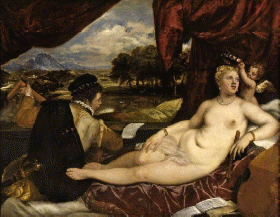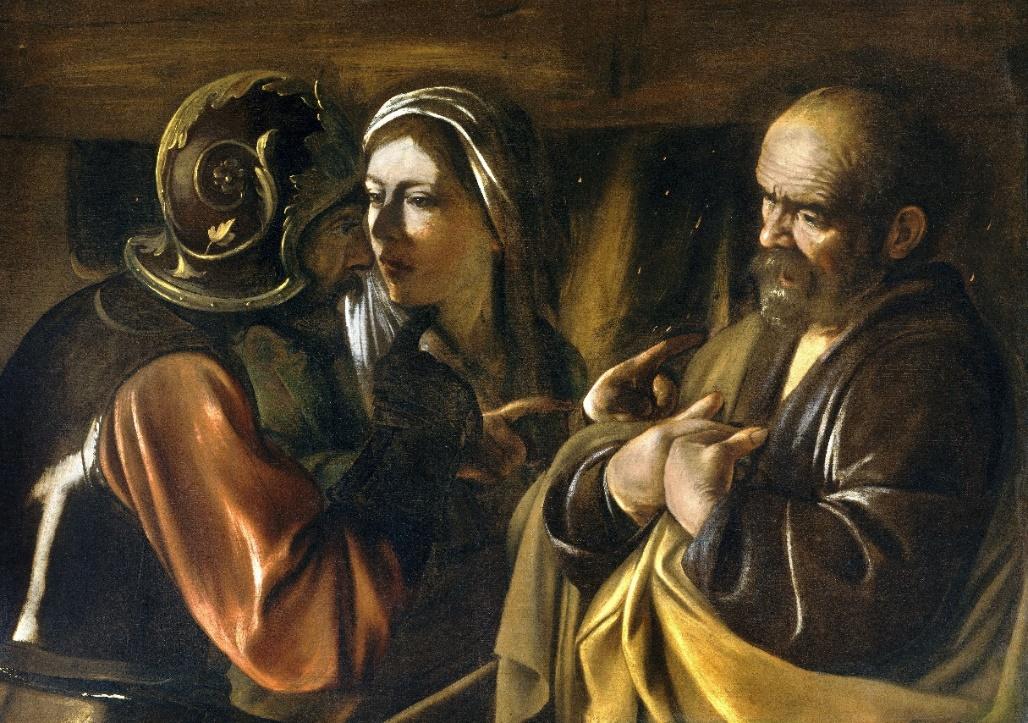Description
Venus and the Lute Player by Titian

Tiziano Vecelli, also known as Titian, was a veteran painter during the renaissance period. One of his most famous paintings from the Met museum is the Venus and the lute player. His work portrayed a powerful interest in color and displayed the ideologies of the renaissance period (The Metropolitan Museum of Art, 2021). This period sought to express other aspects of life, other than religion, which was the predominant force then (Frank, 2011). Renaissance art fused science with religion to create realism through art. In Venus and the lute player, Titian drew a man playing the lute, with Venus in bed, reclining on pillows, at full length. There is a companion in bed with Venus and the musician turns to look at her, but she looks away. Venus’ bed is set against a large open window and is naked while the musician is dressed.
The Denial of Saint Peter by Caravaggio

Michelangelo Merisi, also known as Caravaggio, was an Italian painter during the baroque period. Baroque art is mainly faced for its depiction of ornate details. Baroque art did not depict the style of the people who lived during that period (The Metropolitan Museum of Art, 2021). This type of art was characterized by exaggerated lighting and intense emotions (Frank, 2011). The denial of Saint Peter depicts two men and a woman, with one man dressed as a soldier while the other man seems to be contesting something. The man dressed as a soldier points a finger at the other man while the woman in the middle stares at the soldier in awe.
Analysis
Venus and the lute player by Titian is well-detailed with an intense focus on color. The artist carefully ensures that the color of the bed, the color of the curtains, and that of the clothes the musician wears are in harmony with minimal mixing. The colors are also very bright for clarity when viewing the various aspects of the painting that the artist wants to display. The denial of Saint Peter by Caravaggio gives a particular focus on the facial features of the characters, which are clearly indicated. The painting shows a stark contrast between dark backgrounds and bright light.
Interpretation
Venus and the lute player by Titian is an expression of love, poetry, and music, themes that were popular during the renaissance period. The musician, dressed in attire possibly from that time, serenades his beloved, Venus. His dressing is meant to impress her as it depicts class and sophistication. Venus in bed naked is meant to show her beauty, given the appreciation ancient Italians had for naked feminine beauty. The musical instrument also shows the necessity of music and poetry during courtship and romance during that period. Venus looks away when the musician is wooing her, and it is unclear whether this is rejection or a sign of shame. Women were required to be less bold in the presence of men during that period.
The denial of Saint Peter by Caravaggio shines Peter in bright light as compared to his accusers. This is due to his opposition to the association with Jesus and his lie is highlighted while the accusations of the accuser are put in dark light. This painting is used to depict an event that is documented in the bible of the apostle Peter denying Jesus when questioned by Roman soldiers.
Evaluation
The style used by both artists illustrates the message they south to pass effectively while greatly informing on the artistic styles predominant during those periods. The renaissance period came with more focus on things outside religion while the baroque period is famed for its attention to detail. Titian focused on ensuring that he paints about contemporary topics that integrate religion, such as love, while Caravaggio focuses on all topics, with a focus on detail.
References
Frank, P. (2011). Preble’s Artforms (10th ed.). Prentice Hall PTR.
Merisi, M. (1610). The denial of Saint Peter [painting]. The Metropolitan Museum of Art, New York, NY, United States. Web.
The Metropolitan Museum of Art. (2021). Venus and the Lute Player. The Metropolitan Museum of Art. Web.
Vecelli, T. (1565). Venus and the lute player [painting]. The Metropolitan Museum of Art, New York, NY, United States. Web.